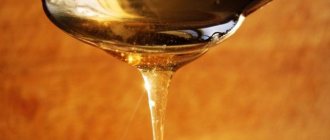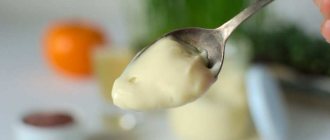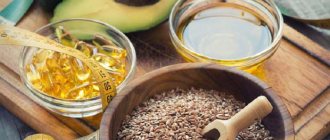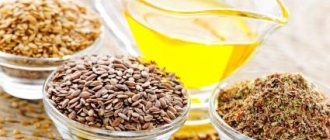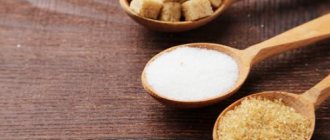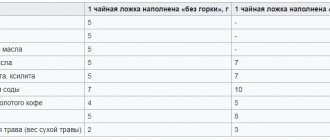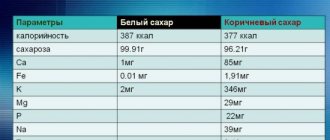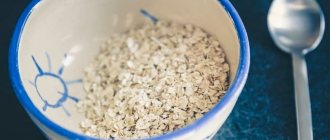How to Make an Old Fashioned Poultry and Vegetable Pie in Olive Oil?
To prepare this interesting dish, cut the chicken breasts into small pieces. Peel the onion and chop it. Peel the carrots, sweet potatoes and parsnips and dice them too. Steam vegetables for 10 minutes. Pour olive oil into a frying pan and fry the onion over low heat, then add the chicken pieces. Add the precooked vegetables and let them brown for 3-4 minutes. Season with salt and pepper, add tarragon and parsley and mix everything well.
Break the egg into a bowl, pour in the cream and beat with a fork. Add to vegetables and chicken and mix everything well. Preheat the oven to 180 C. Roll out half of the puff pastry with a rolling pin and place in a pie dish. Then prick the dough with a fork and pour it onto the dough. Level the surface and trim off excess dough. Make a hole in the middle to let out steam. Roll out the rest of the dough and cut out Christmas, star or fir shapes. Brush the dough with egg yolk, place the shapes and place them in the egg yolk. Bake for 35/40 minutes, monitoring the end of cooking.
- Puff pastry - 500 g,
- Chicken breast - 400 g,
- Potatoes - 1 piece,
- Parsnip - 1 piece,
- Egg - 1 piece,
- Onion - 2 heads,
- Carrots - 2 root vegetables,
- Cream - 25 ml,
- Tarragon - 2 tbsp. l.,
- Parsley - 1 bunch,
- Olive oil - optional
- Egg yolk - for lubrication,
- Salt and pepper - to your taste.
Source
Recipes for popular dietary dishes with olive oil
Avocado salad
Ingredients:
- 140 g bell pepper;
- 100 g avocado;
- 160 g tomatoes;
- 100 g cucumbers;
- 100 g of Chinese cabbage;
- 50 g green onions;
- 1 tbsp. l. wine vinegar;
- 1 tbsp. l. olive oil;
- salt to taste.
Wash the pepper, remove the stem, remove seeds, and chop. Chop the cabbage, finely chop the remaining products. Place everything in a salad bowl. Salt and season.
The calorie content of the salad is 60 kcal per 100 grams.
Greek salad
- 140 g bell pepper;
- 100 g tomatoes;
- 100 g cucumbers;
- lettuce and basil leaves;
- 100 g olives;
- 70 g feta cheese.
Finely chop everything and season.
Calorie content - 130 kcal per 100 grams of salad.
Salad composition in Spanish
- 100 g olives;
- 4 onions;
- half a bunch of parsley;
- 3 tbsp. l. vinegar (wine);
- 3 tbsp. l. oils; ground black pepper, salt.
Peel the onion and boil in salted water until soft, drain in a colander and dry. Slice and place on a plate. Chop the greens and sprinkle on top of the onion. Place olives, cut into rings, on top of the greens. Mix wine vinegar with oil and season the dish.
Calorie content - 130 kcal per 100 grams.
How many grams in spoons table
Measurements of products in grams are used in order not to oversalt the dish, and also not to oversweet it. Typically, recipe authors indicate the weight of food using a small heaped spoon. Sometimes recipes with a flat spoon are used, but the author must indicate this. The weight measure in our table is indicated in the generally accepted spoon with and without a slide.
Composition, benefits
Olive oil consists exclusively of fats (BJU per 100 grams - 0.0 g/99.9 g/0.0 g). It is very useful due to easily digestible monounsaturated fatty acids (in particular, oleic acid), which directly affect the reduction of cholesterol levels in the body, strengthen and make the walls of blood vessels elastic.
Olive oil contains vitamins K, D, E, A, B3, and is also rich in calcium, sodium, magnesium, phosphorus and other trace elements.
This composition has a beneficial effect on the body:
- strengthens bone tissue;
- restores the walls of the intestinal tract;
- increases resistance to infections;
- slows down the aging process;
- improves muscle tone.
Linoleic acid present in the oil has a positive effect on vision, improves coordination of movements, and helps in wound healing.
Olive oil is especially popular among women. It is believed that its use prevents some forms of cancer: 100 grams per week reduces the risk of developing a malignant breast tumor by 4 times.
The oil is also widely used in cosmetology due to the valuable substances included in its composition: squalane, squalene and phenol. Used in the production of products for moisturizing, nourishing and firming the skin. Also good for hair.
How many grams are in a tablespoon table
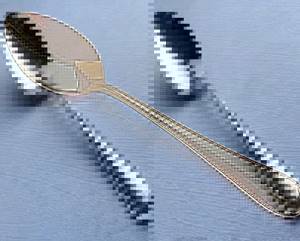
If we talk about bulk products that are contained in a tablespoon, then we mean that they are collected level with the rim of the spoon. In some cases, a small slide is provided. If you want to find out how many grams are in a spoon of certain products, then refer to the table.
Bulk products
| Product | No slide | With a slide |
| Flour | 20 | 30 |
| Sugar | 20 | 25 |
| Powdered sugar | 22 | 28 |
| Cocoa powder | 20 | 25 |
| Starch | 20 | 30 |
| Extra salt | 22 | 28 |
| Rock salt | 25 | 30 |
| Baking soda | 22 | 28 |
| Rice | 15 | 18 |
| Ground coffee | 15 | 20 |
| Gelatin | 10 | 15 |
| Dry yeast | 8 | 11 |
| Cinnamon | 15 | 20 |
| Lemon acid | 12 | 16 |
| Barley grits | 25 | 30 |
Liquid products
The table shows the weight of liquid products (in grams). What is taken into account here is that liquids are poured into a heaped spoon, and if the products are rarer, then they are poured to the edge of the spoon.
| Product | gram |
| Honey | 30 |
| Water | 18 |
| Jam | 50 |
| Vinegar | 16 |
| Whole milk | 18 |
| Condensed milk | 30 |
| Vegetable oil | 16 |
| Melted margarine | 15 |
| Peanut paste | 16 |
| Sour cream | 25 |
How many milliliters of vegetable oil in a spoon?
In a tablespoon
A tablespoon holds 15 ml of vegetable oil
In a dessert spoon
In a dessert spoon 10 ml of vegetable oil (sunflower)
In a teaspoon
One teaspoon contains 5 ml of vegetable oil
Important: the volume of spoons is standard for various liquids, so the same volume as vegetable oil will be for sunflower, olive, corn, linseed and rapeseed oils.
How many grams in a teaspoon table
If 1 teaspoon of flour is indicated, then this means a slightly heaped spoon. Accordingly, recipes may also prescribe 1 small level spoon of flour, then that’s how it should be.
Bulk products
| Product | No slide | With a slide |
| Cocoa powder | 9 | 12 |
| Buckwheat | 7 | 10 |
| Starch | 6 | 9 |
| Dry mustard | 4 | 7 |
| Dry yeast | 5 | 8 |
| Raisin | 7 | 10 |
| Gelatin | 5 | 8 |
| Ground cinnamon | 8 | 12 |
| Ground coffee | 7 | 9 |
| Instant coffee | 4 | 5 |
| Cereals (barley, pearl barley) | 8 | 11 |
| Cornflakes | 2 | 4 |
| Lemon acid | 5 | 8 |
| Poppy | 8 | 12 |
| Semolina | 8 | 12 |
| Powdered milk | 12 | 14 |
| Potassium permangantsovka | 15 | 18 |
| Flour | 9 | 12 |
| Cereals | 6 | 8 |
| Nuts | 10 | 13 |
| Ground pepper | 5 | 8 |
| Rice | 5 | 8 |
| Baking powder | 5 | 8 |
| Rock salt | 8 | 12 |
| Sugar (and its powder) | 7 | 10 |
| Soda | 7 | 10 |
| Extra salt | 7 | 10 |
| Ground crackers | 5 | 7 |
| Sorbitol | 5 | 7 |
| Dry cream | 5 | 6 |
| Dry mashed potatoes | 10 | 12 |
| Beans | 10 | 12 |
| Medicinal herb | 2 | 3 |
| Lentils | 7 | 9 |
| Egg powder | 10 | 12 |
| Tea | 2 | 3 |
teaspoon of olive oil on an empty stomach
FOLK RECIPES FOR COUGH For the treatment of cough in children, medications based on natural products are much more effective than chemical drugs. The choice of such medicines is now widely available in every pharmacy, but you can prepare a mixture for your baby yourself, using the experience of traditional medicine. However, before using any folk recipe, be sure to consult with your child’s doctor! Show in full..
When treating coughs in children, healer Vanga advised boiling 1 potato, 1 onion and 1 apple in 1 liter of water. Cook until the water is reduced by half. Give this decoction to the child 3 times a day, 1 teaspoon. Fresh cabbage juice with sugar is useful as an expectorant for cough and hoarseness. A decoction of cabbage with honey works well. Pour 1 tablespoon of pine buds with 1 glass of boiling water, leave, covered, for 40 minutes, strain. Take 1-2 sips when you feel the urge to cough. Honey with olive oil: mix bee honey and warm olive oil in equal proportions. Give small children 1 teaspoon 3-4 times a day when coughing. The drug is also effective in the treatment of whooping cough. Sweet radish: cut the washed and peeled black radish into thin slices and sprinkle with sugar. After 6-8 hours, you can drink the released juice, 1 tbsp. spoon every hour when children cough. Balm for bronchitis. Take 500 g of crushed walnuts, 300 g of honey, 100 g of aloe juice and add the juice of 4 lemons. Mix everything well and take 1 teaspoon for children 3 times a day half an hour before meals for coughs, bronchitis, etc. Honey with aloe: dilute 300 g of honey with half a glass of boiled water, add finely chopped aloe leaf and cook over low heat for 2 hours. Then remove from heat, stir and leave to cool. Children take 1 teaspoon or dessert spoon, depending on age, 3 times a day for bronchitis. To treat a cough, boil one lemon over low heat for 10 minutes. Then cool, cut off the peel, squeeze the juice into a glass. Add two tablespoons of glycerin and fill the glass to the top with honey. After thorough mixing, drink a teaspoon several times a day, preferably an hour before or two hours after meals, in the morning - on an empty stomach. This mixture is tasty and harmless, and easily cleanses the lungs and bronchi. Radish and carrot juice with honey: mix 100 ml of radish, carrot juice and a tablespoon of honey. Take a teaspoon 4-5 times a day. Infusion of anise with honey: 2 tbsp. spoons of anise seeds, pour 0.5 liters of boiling water, close the lid and place in a boiling water bath for 15 minutes. Then remove, let stand for 20-30 minutes, strain, dilute honey in the infusion (a tablespoon of honey per glass) and take 1-2 tbsp. spoons 3-4 times a day. Viburnum with honey: rinse 100 g of viburnum berries, pour in 200 g of honey, cook over low heat for 5 minutes, cool at room temperature and take a tablespoon of the mixture 4-5 times a day with warm water. A decoction of young shoots was eaten in milk: boil 30 g of young chopped shoots for 10 minutes in a liter of milk, leave for 2-3 hours, strain and drink a tablespoon 3-4 times a day. Turnip decoction: 2 tbsp. pour a tablespoon of chopped turnip root into a glass of boiled water, cook for 15 minutes, leave for half an hour to an hour, strain, bring the volume of the decoction with boiled water to 200 ml and drink 1/4 cup 4 times a day for bronchitis. Marshmallow infusion with honey: pour a tablespoon of dry crushed marshmallow root (particles no more than 3 mm) into a glass of cold boiled water, strain after an hour, squeeze out the remaining raw materials, add honey to the resulting slimy infusion to taste and drink a teaspoon every 2 hours at chronic bronchitis, tracheitis, laryngitis, pneumonia and bronchial asthma. Take lingonberry juice, mixed in half with honey, a tablespoon 3-4 times a day. Drink 1/4 cup of freshly squeezed cucumber juice 2-3 times a day for bronchitis, tracheitis and other respiratory diseases. Curd compress: warm the curd, drain the whey, put the curd on gauze, and then tie it to your chest for 30-40 minutes. This is the only thermal procedure that can be done at high temperatures. Flatbread for bronchitis: one teaspoon each of mustard powder, corn flour, vegetable oil, honey, vodka or cologne. Mix everything, divide into two parts, place on cloths, apply to the chest and back. Wrap in a thin diaper or elastic bandage, put on pajamas. In the morning, remove and wipe with a damp cloth soaked in warm water. A mixture of mustard and cough flour: mix 1 tablespoon of dry mustard with 1 tablespoon of gray flour. Take an old vest-type shirt in which you need to cut the sleeve completely at the shoulder. Sprinkle the dry mixture onto the shirt in an even layer, place it on the child’s back, put one arm in the sleeve, and make a button on the other sleeve. Pour the mixture onto the chest, excluding the area of the heart, and lightly bandage from below and from the shoulder. Do it before bed and it is advisable to put it right away so that the child does not get up until the morning. There will be no cough the next day. Sometimes I had to do it again, but rarely. It's good to have sweet almond oil in your medicine cabinet. It is given to children for coughs and anemia - 1 teaspoon before lunch and 2 teaspoons after dinner, mixed with fresh milk or boiled honey. The oil clears the throat of phlegm and saliva, treats diseases of the gastrointestinal tract, restores appetite in case of dangerous pneumonia, and in general for any other inflammation. Such patients are given 1 teaspoon of oil 3-4 times a day. For various ear diseases, it has a good effect - you should drop 6-8 drops into the sore ear and cover it with a piece of cotton wool. For a runny nose, cough and other respiratory diseases, you can boil 3 tbsp in a saucepan. spoons of pine buds and breathe over the steam, wrapped up. After the procedure, it is not recommended to go outside for 2-3 hours. For attacks of dry cough, finely chop the orange along with the peel, add sugar and cook for 30 minutes. Take the resulting syrup 1-2 tsp. with every coughing attack.
How many grams are in a dessert spoon
How many grams are in spoons? A dessert spoon is between a tablespoon and a tea spoon in size. Its purpose is to serve as a table device for eating sweets. The dessert spoon copes with the measurement mission no worse than its older and younger “sister”. Find out how many grams of products (liquid and bulk) it contains in the table.
| Product | gram |
| Sugar | 15 |
| Vanillin | 4,5 |
| Lemon acid | 12 |
| Salt | 20 |
| Flour | 16 |
| Water | 10 |
| Milk | 10 |
| Vegetable oil | 11 |
| Vinegar | 10 |
Today in the article you learned in detail how many grams are in spoons (table spoons, tea spoons and dessert spoons). You don’t have to memorize this table; you just keep it handy and open it when you need it. Now you won't have any difficulties with how to weigh certain products. Delicious dishes and bon appetit!
How many grams are in spoons: table of weight measures:
Great help for young housewives! It is important to know weight measurements, because the quality of cakes, pies, and various delicacies depends on it.
When cooking, especially with new recipes, this sign can even be very useful.
I copied all the signs. I’ll laminate it and hang it in the kitchen))) Otherwise, how can I remember everything)))
Useful signs. You can print it out and hang it in your kitchen.
It’s good to have the tables presented in the article in your household. But I still prefer scales - there are many different types sold now. You just need to buy one with weighing capabilities from 1g to 1kg.
Very useful information) I’ll save it in my bookmarks. Thank you.
Wonderful information. Just a godsend for the housewife and not only. Thanks for your efforts)
Nice summary table, turns out I was always wrong
And I do everything by eye... with tables it turns out more accurately!
Your article was very useful, because I couldn’t find anywhere how many grams of baking powder are in a teaspoon, but I found it here)) Thanks for the useful article.
Add a comment Cancel reply
New on the site

One spoon of vegetable oil is how many grams?
As noted above, for plants the volume value is not equal to mass, as for the same water. Therefore, below there will be data in both milliliters and grams.
- 1 tablespoon holds 15 ml. or 17 grams of vegetable matter. oils
- 1 teaspoon holds 5 ml. or 5.5-6 grams of oil.
- And 1 dessert spoon holds 10 ml. or 11 g butter.
| Spoon type | Volume, ml. | Weight, g. |
| Tea spoon | 5 | 5-6 |
| Dessert spoon | 10 | 11 |
| Tablespoon | 15 | 17 |
How much oil is in 1 spoon - table
The harm of olive oil
Its unlimited consumption provokes a number of diseases (obesity, heart attack, stroke, colon cancer), and can also cause side effects, which is associated with the high calorie and fat content of the product:
- indigestion;
- diarrhea;
- excessive bile secretion, gallbladder blockage and stone formation.
Olive oil is a healthy product when consumed in moderation and under storage conditions.
Expert
Endocrinologist, nutritionist
4 years
Send
1 tablespoon of olive oil weighs 14.4 g
For the calculation, we used data on the density of olive oil at normal atmospheric pressure (760 mmHg) and a temperature of 20°C, which is: 800 kg/m³
Physical state of the substance: Liquid

